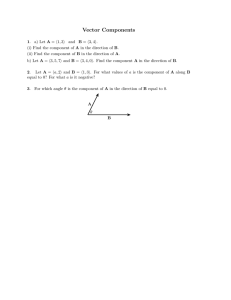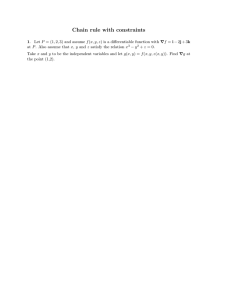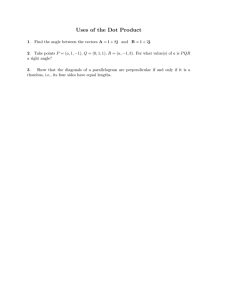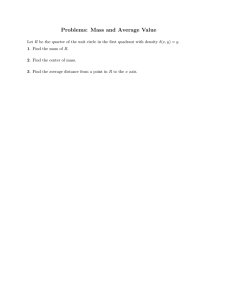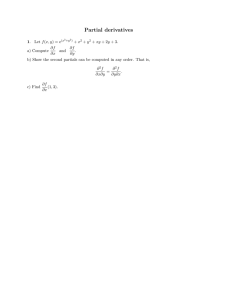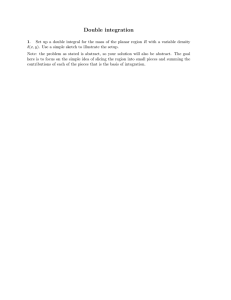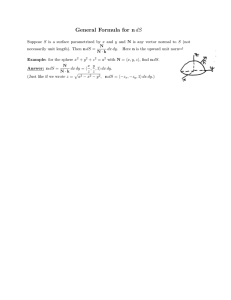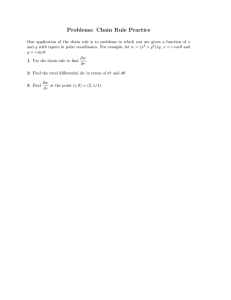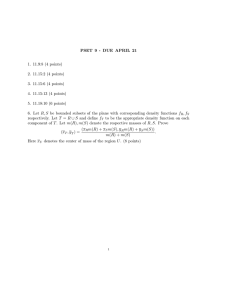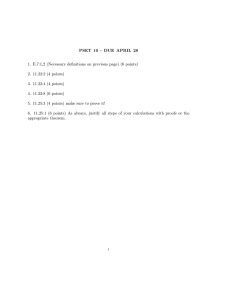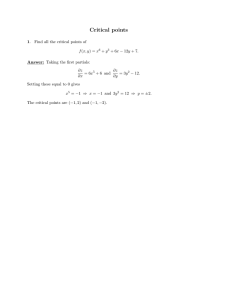Document 13739651
advertisement
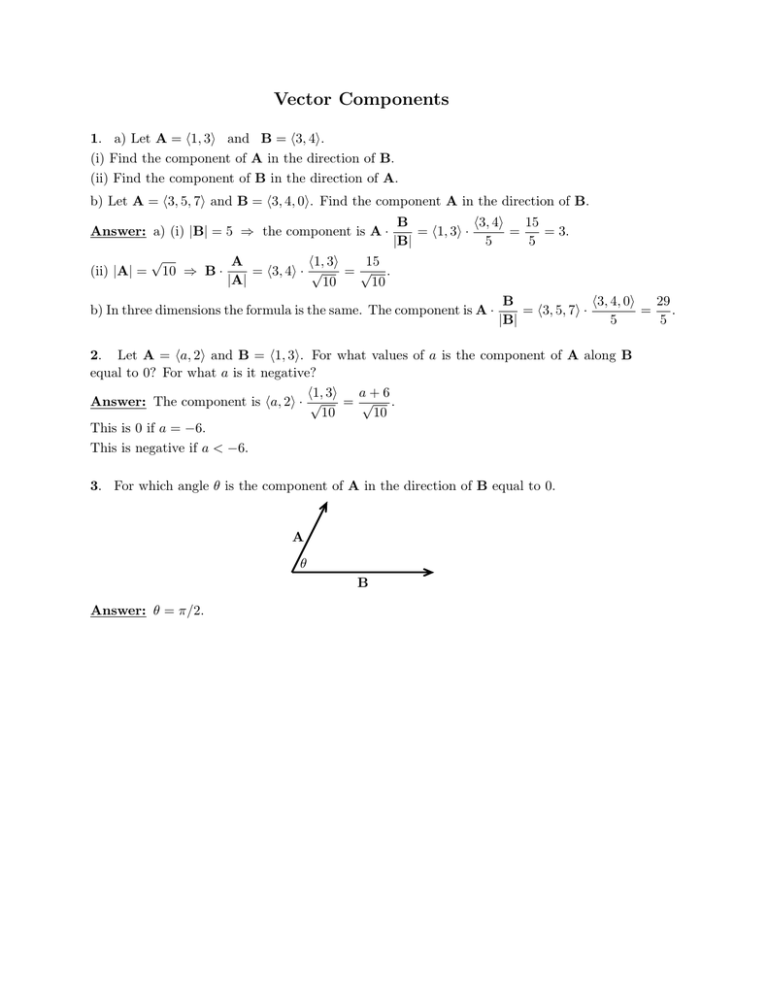
Vector Components 1. a) Let A = (1, 3) and B = (3, 4). (i) Find the component of A in the direction of B. (ii) Find the component of B in the direction of A. b) Let A = (3, 5, 7) and B = (3, 4, 0). Find the component A in the direction of B. Answer: a) (i) |B| = 5 ⇒ the component is A · (ii) |A| = B (3, 4) 15 = (1, 3) · = = 3. |B| 5 5 √ A (1, 3) 15 10 ⇒ B · = (3, 4) · √ =√ . |A| 10 10 b) In three dimensions the formula is the same. The component is A · B (3, 4, 0) 29 = (3, 5, 7) · = . |B| 5 5 2. Let A = (a, 2) and B = (1, 3). For what values of a is the component of A along B equal to 0? For what a is it negative? (1, 3) a+6 Answer: The component is (a, 2) · √ = √ . 10 10 This is 0 if a = −6. This is negative if a < −6. 3. For which angle θ is the component of A in the direction of B equal to 0. A θ B Answer: θ = π/2. MIT OpenCourseWare http://ocw.mit.edu 18.02SC Multivariable Calculus Fall 2010 For information about citing these materials or our Terms of Use, visit: http://ocw.mit.edu/terms.
